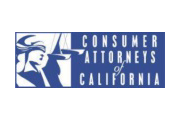 Cyclists who ride at night need to have lights on their bicycles in order to be safe. Lights are essentially divided into two categories: “to see” and “be seen.” Of course “to see” lights are those that provide a steady beam to light up the road or trail in front of you, the cyclist. The “be seen” lights are the issue here.
Cyclists who ride at night need to have lights on their bicycles in order to be safe. Lights are essentially divided into two categories: “to see” and “be seen.” Of course “to see” lights are those that provide a steady beam to light up the road or trail in front of you, the cyclist. The “be seen” lights are the issue here.
Many people use blinking lights in order to be seen by traffic at night. However, there is this interesting phenomena called the “Moth Effect” which suggests that these blinkies could be unsafe.
What is the “Moth Effect”? It suggests that blinking red lights on the back of bicycles might be more dangerous than steady red lights. On several occasions, when drunk drivers have hit cyclists from behind, it has been argued that the red blinkie lights actually attracted the drunk.
Have you ever watched moths outside in the dark attracted to a lighted room? Similar thing. Taillights on “blinking mode” cause these unalert drivers–especially drunk ones–to fixate on the lights and potentially steer right towards them and hit the bicycle!
Sounds crazy but it makes some sense if you think about it. You might try this theory out at night yourself. I am not suggesting that you go out with a blinking red light on the back of your bike and sit outside the local bar. Try going out in the dark by foot and finding such a light. Feel how you are drawn to the target and how distance becomes irrelevant?
This effect can also be measured analyzing how, when faced with oncoming traffic, drivers begin steering away from the oncoming vehicle but that 2 seconds before the meeting drivers will deflect the steering wheel in the direction toward the approaching vehicle. This suggests that drivers might even steer off the road in the direction of their fixation.
The moth effect seems to have two enabling conditions:
The study suggests that a steady light allows motorists to judge distance better and make safer passes.
What do you think of this theory? Are cyclists actually increasing the danger of riding at night when they use blinking lights? If you or anyone you know has been injured by this deceiving effect, or has any questions about how cyclists may be in danger while on the roads, please feel free to contact me.
About the author: Claude Wyle is an aggressive advocate for Bay Area bicyclists. Claude has decades of experience representing those harmed by the wrongful conduct of other, and, as a Marin County bicyclist accident attorney, has fought to protect the rights of injured cyclists throughout his legal career. Claude is also an avid cyclist himself and member of the Marin County Bicycle Coalition, San Francisco Bicycle Coalition and Silicon Valley Bicycle Coalition and is a sponsor of Safe Routes to School.





